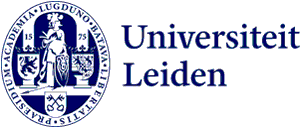
The Arsenaal in use: what do people think of their new workplace?
To measure the level of user satisfaction of the renovated Arsenaal building, a survey has been conducted amongst staff members. The results are presented below.
It’s a while now since the Covid pandemic and the Arsenaal ‘residents’ have been properly using their workspaces in the renovated building for a year. We therefore conducted a survey to measure the level of user satisfaction. Staff of LUCAS and LUCL who work in the Arsenaal were asked about their satisfaction with the work environment, workplace use and facilities for meetings and social contacts. The detailed survey was completed by 36 members of staff.
Main conclusions
Out of the respondents who completed the survey, 84% are satisfied with the workplace. 57% say that the new workplace has made it easier to perform their professional tasks, while 21% say it has become more difficult and 21% haven’t noticed any difference. 71% experience the Arsenaal as an improvement on their former workplace in Eyckhof/Van Wijkplaats and the Huizinga building, although 21% describe it as worse.
Staff spend most of their working time in their office in the Arsenaal (53.6%). They also work from home (18.9%) or teach in a lecture hall or tutorial room (14.2%). Most of the work comprises general desk work (27.4%) and desk work that requires not being disturbed (18.4%). On average, 15.8% of working time is spent teaching, followed by 10.5% scheduled meetings and 9.2% reading.
Another result is that 54% of the respondents say that having the Arsenaal as their workplace has led to neither more nor less working from home, while 23% say it has led to more working from home and 23% say that this is not the case.
For meetings and social contacts, staff mostly use their own office, the meeting rooms and common room in the Arsenaal, or the Literair Café in the Lipsius building. On a scale of 1 to 5, positive ratings are given to the number of social areas (4.1), the number of available workspaces (3.9), the number of meeting spaces (3.8) and the quantity and diversity of workspaces, meeting spaces, meeting rooms and social areas (3.8).
Points requiring attention
Generally speaking, the respondents were positive in how they rated the work environment, but they naturally also mentioned various points requiring attention. These will be taken into account when developing the other Humanities buildings in the context of the Humanities Campus project. For example, attention is required for how facilities work, such as the control panel for the lighting and the temperatures in the offices, and making arrangements when sharing an office.
We extend our thanks to all colleagues who took the time to give their feedback. We will use this input as we continue to work on improving the work environment, with aim of achieving a productive and comfortable workplace for everyone.
